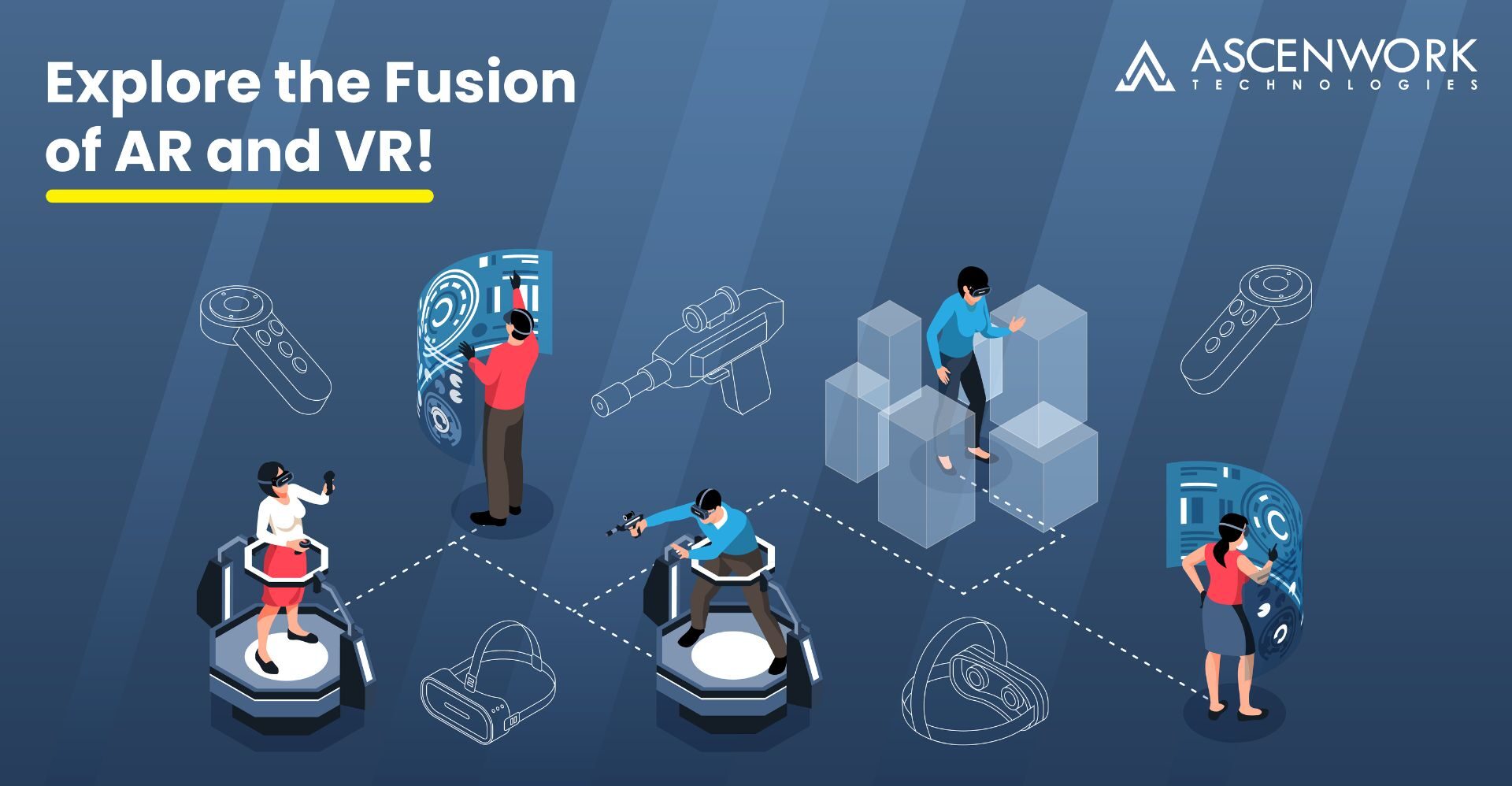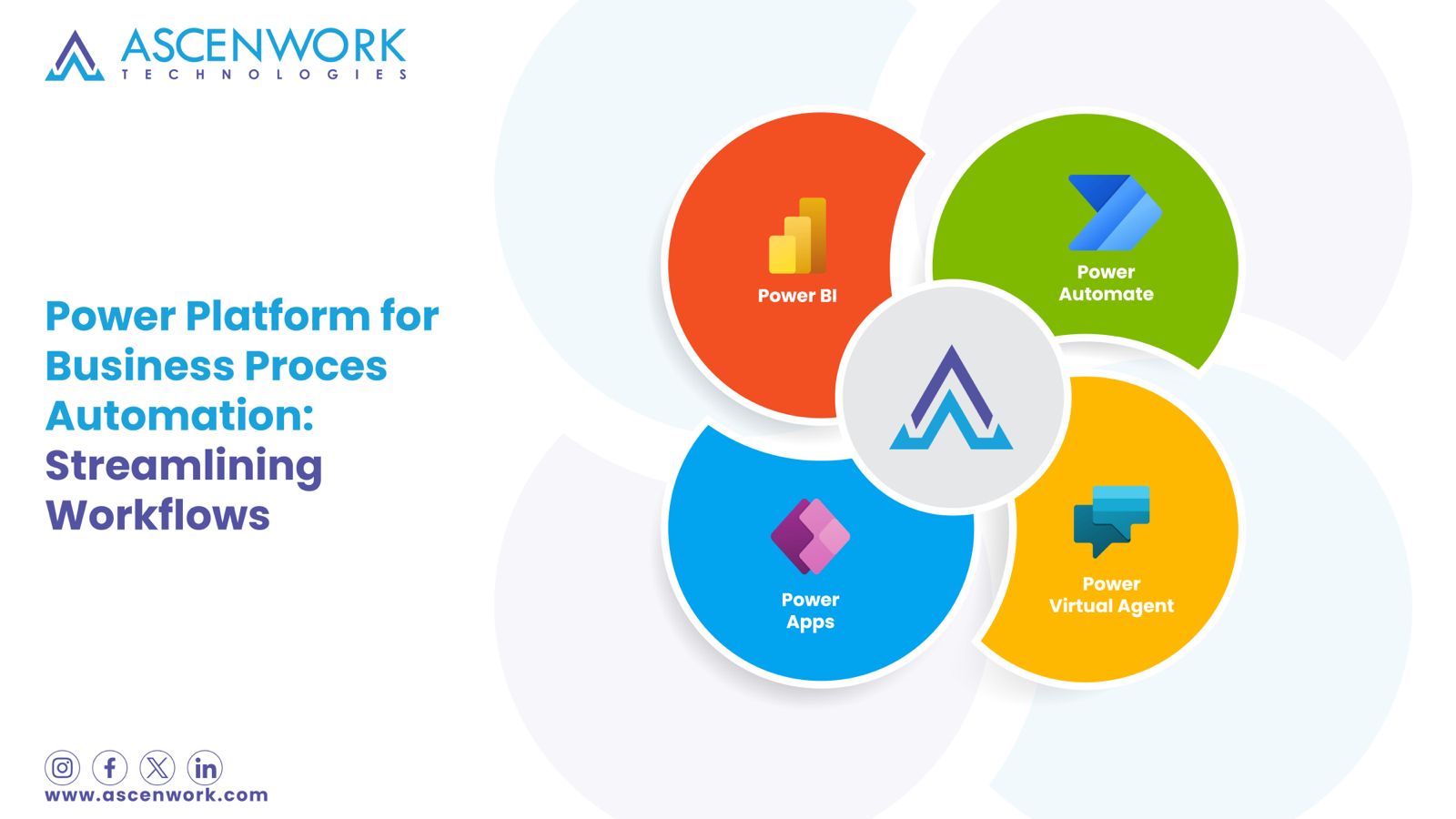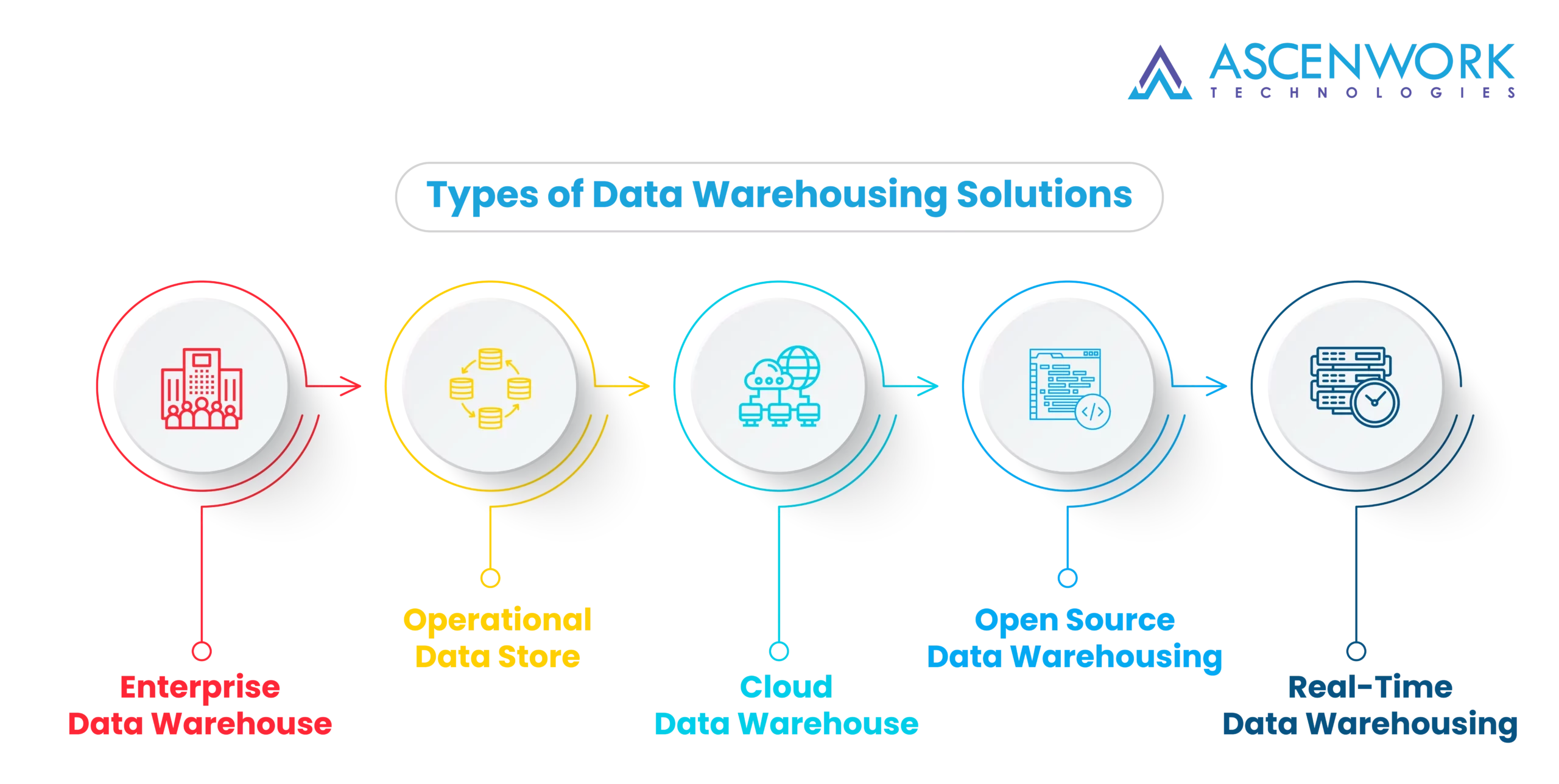
In a world where the digital and physical realms converge seamlessly, Augmented Reality (AR) and Virtual Reality (VR) have emerged as the torchbearers of innovation. These transformative technologies are not only reshaping how we interact with digital content but are fundamentally redefining the very essence of user experiences.
Welcome to an exciting journey into the realm of AR/VR Integration, where software development takes center stage in unlocking experiences that were once confined to the realm of science fiction. In this comprehensive exploration, we will unravel the intricacies of AR and VR, dissect their impact on user experiences, and peer into a future where the boundaries between reality and the digital world blur into oblivion.
So, fasten your seatbelts, because we are about to embark on a thrilling expedition through the immersive landscapes of AR and VR, where software is the key that unlocks doors to new dimensions of interaction and engagement.
Understanding VR and AR Building Blocks of Immersive Realities
Virtual Reality (VR) and Augmented Reality (AR) – these two acronyms have become synonymous with cutting-edge technology and futuristic experiences. But what exactly do they entail, and how do they differ? In this section, we’ll dissect the fundamental concepts of VR and AR to provide a solid grounding for our exploration of AR/VR Integration.
VR is the art of immersion, the practice of transporting users to entirely new, computer-generated environments. When you don a VR headset, you step into a digital realm where your senses are enveloped by a fabricated reality. It’s an all-encompassing experience designed to make you believe you’re somewhere entirely different.
Headset
Motion Tracking
Immersive Audio
AR, on the other hand, is about enhancing the real world with digital overlays. Rather than replacing your surroundings, AR adds computer-generated elements to your view of the physical world. It’s like having an interactive, information-rich layer superimposed on your everyday experiences.
Smart Devices
Marker less Tracking
Contextual Information
The Intersection of VR and AR
While VR and AR are distinct technologies, they share common ground in their aim to transform human-computer interaction. The convergence of these realms is where AR/VR Integration comes into play, opening the door to experiences that blend the real and the virtual seamlessly. This integration leverages software development to create dynamic, interactive, and immersive user experiences that were once the stuff of science fiction.
Now that we’ve laid the groundwork by understanding VR and AR, we’re poised to explore how their fusion, driven by software innovation, is reshaping the way we perceive and engage with the world.
VR, AR, and their Impact on User Experience
While VR and AR are distinct technologies, they share common ground in their aim to transform human-computer interaction. The convergence of these realms is where AR/VR Integration comes into play, opening the door to experiences that blend the real and the virtual seamlessly. This integration leverages software development to create dynamic, interactive, and immersive user experiences that were once the stuff of science fiction.
Now that we’ve laid the groundwork by understanding VR and AR, we’re poised to explore how their fusion, driven by software innovation, is reshaping the way we perceive and engage with the world.
VR Immersion Beyond Boundaries
VR’s hallmark is its ability to transport users to entirely new worlds or scenarios. From traversing distant galaxies to diving into historical events, VR immerses users in a way that traditional interfaces can’t replicate. This immersion creates experiences that are not just observed but lived.
VR has an unparalleled capacity to evoke emotions. Whether it’s fear in a horror game, wonder in an exploration title, or empathy in a virtual tour, VR can tap into our feelings and forge a deep connection with the content.
VR is a game-changer in fields like healthcare, aviation, and military training. It provides a safe, realistic environment for trainees to practice and learn without real-world consequences.
AR Enhancing Everyday Experiences
AR enriches the real world with digital information. Imagine strolling through a city with your smartphone, and as you point it at historical landmarks, you receive historical tidbits and fun facts. AR enhances our surroundings, making them more engaging and informative.
The true magic unfolds when VR and AR merge into a singular experience, guided by software development. This synergy enables users to seamlessly transition between immersive virtual environments and augmented real-world overlays, offering the best of both worlds.
The impact of AR and VR on User Experience is only in its infancy. As technology continues to advance, and as software development pushes the boundaries of what’s possible, we find ourselves on the cusp of a UX revolution. The future promises experiences that are more engaging, interactive, and personalized than ever before.
The Role of VR and AR in Future UX
As we journey further into the fascinating realm of AR/VR Integration, it’s essential to gaze ahead and envision the role that Virtual Reality (VR) and Augmented Reality (AR) will play in shaping the User Experience (UX) of tomorrow. These technologies aren’t merely novelties; they are catalysts ushering us into a new era of digital interaction.
A Seamless Blend of Realities
The future of UX lies in the seamless integration of physical and virtual realities, thanks to AR and VR. Imagine a world where the line between the real and the digital is so finely woven that it’s almost imperceptible.
Personalized Immersion
Enhanced Collaboration
Information Augmentation
Empathetic Experiences
UX that Adapts and Learns
In the future, UX will not be static but adaptive. AR and VR will continuously learn from user interactions, preferences, and feedback to provide increasingly personalized and intuitive experiences.
Contextual Awareness
Ethical Considerations
Impact on Creativity
The Future Beckons
In the not-so-distant future, AR and VR will cease to be buzzwords and instead become integral components of our daily lives. The boundaries of what’s possible will continue to expand, making the UX of tomorrow a realm of limitless possibilities.
As we progress in our exploration of AR/VR Integration, we’ll dive deeper into the practical applications of these technologies in various industries and unveil the innovations that are already shaping the landscape of immersive user experiences. Stay with us on this exhilarating journey into the future of UX.
Advancements in Hardware and Software
In our exploration of AR/VR Integration, it’s impossible to overlook the dynamic advancements in both hardware and software. These strides are the engines propelling us towards immersive user experiences that once seemed like distant dreams. Let’s take a closer look at how technology is shaping the future.
Hardware The Enablers of Immersion
Ergonomics
Resolution
Wireless Freedom
Haptic Feedback
Software The Brains Behind the Magic
Realistic Environments
AI and ML
Content Creation
Cloud Integration
Augmented Reality (AR) is valuable for several reasons:
- Enhanced Real-World Context: AR overlays digital information on the real world, offering contextual insights and augmenting our understanding of the environment.
- Engaging User Experience: AR provides interactive and immersive experiences, making content more engaging and memorable.
- Practical Applications: AR finds applications in various fields, from navigation and gaming to education and remote assistance, enhancing functionality across industries.
- Training and Learning: AR is used for realistic training simulations, helping professionals acquire skills in a safe environment and aiding students in understanding complex concepts.
- Visualizing Data: AR visualizes data and information, simplifying complex datasets and making them easier to comprehend.
The cameras used in Augmented Reality (AR) devices can vary depending on the platform and application, but generally, they fall into two categories:
- RGB Cameras: These cameras capture standard color images of the user’s surroundings, providing the visual context for AR applications. They are commonly found in smartphones and AR glasses.
- Depth Cameras: Depth-sensing cameras, such as ToF (Time-of-Flight) cameras or structured light cameras, provide information about the distance between objects and the camera. This depth data is crucial for accurately placing virtual objects in the real world and enabling interactions in AR.
The combination of RGB and depth-sensing cameras allows AR devices to understand the environment and overlay digital content seamlessly.
One example of AR/VR technology is Microsoft HoloLens. It’s an augmented reality headset that overlays holographic digital content onto the user’s real-world environment. Users can interact with these holograms, making them a part of their surroundings. HoloLens finds applications in fields like design, education, and remote assistance, offering a glimpse into the potential of AR/VR technology to blend the physical and digital worlds for practical and creative purposes.
Augmented Reality (AR) is used across a wide range of industries and applications, including:
- Entertainment: AR is employed in mobile gaming apps like Pokémon GO, creating interactive and immersive gaming experiences.
- Education: AR enhances learning by providing interactive educational content, such as 3D models and simulations.
- Retail: In retail, AR is used for virtual try-ons, product visualization, and in-store navigation apps.
- Healthcare: AR assists surgeons with navigation during surgeries, provides remote diagnostics, and aids in medical training.
- Navigation: AR-based navigation apps offer real-time directions and information about the user’s surroundings.
- Manufacturing: AR is used for assembly line guidance and quality control, improving efficiency and accuracy.
- Unity 3D: A widely-used game engine for creating both AR and VR experiences.
- Unreal Engine: Another powerful game engine known for its high-quality graphics.
- ARKit (for iOS) and ARCore (for Android): Development kits for building AR apps on mobile devices.
- Vuforia: A platform for creating AR applications, especially for industrial use.
- Blender: An open-source 3D modeling tool used for creating 3D assets.
- A-Frame: A web framework for building VR experiences using HTML and JavaScript.
- SketchUp: A 3D modeling software often used in architectural and design applications.
- Oculus Medium: A VR sculpting tool for creating 3D models.
- Adobe Aero: An AR authoring tool integrated with Adobe Creative Cloud.
- Substance Painter: Used for texturing 3D models and creating realistic materials.
- Gravity Sketch: A 3D design tool that enables VR sketching and modeling.
- Tilt Brush: Google’s VR painting application for creating 3D artwork.
- MagiCAD: Used for designing HVAC and MEP systems in augmented reality.
- ZapWorks: A platform for creating AR content without extensive coding.
- SketchAR: An AR drawing app that helps users sketch artwork on paper.
- SculptrVR: A multiplayer VR sculpting tool for collaborative 3D design.
- Spark AR Studio: Facebook’s platform for creating AR effects on Instagram and Facebook.
- Lens Studio: Snapchat’s tool for creating AR experiences for its platform.
- EasyAR: A user-friendly SDK for developing AR apps with cross-platform support.
- ARToolKit: An open-source tracking library for building AR applications.
These tools and resources offer a range of options for designers and developers to create immersive AR and VR experiences tailored to their specific needs.


